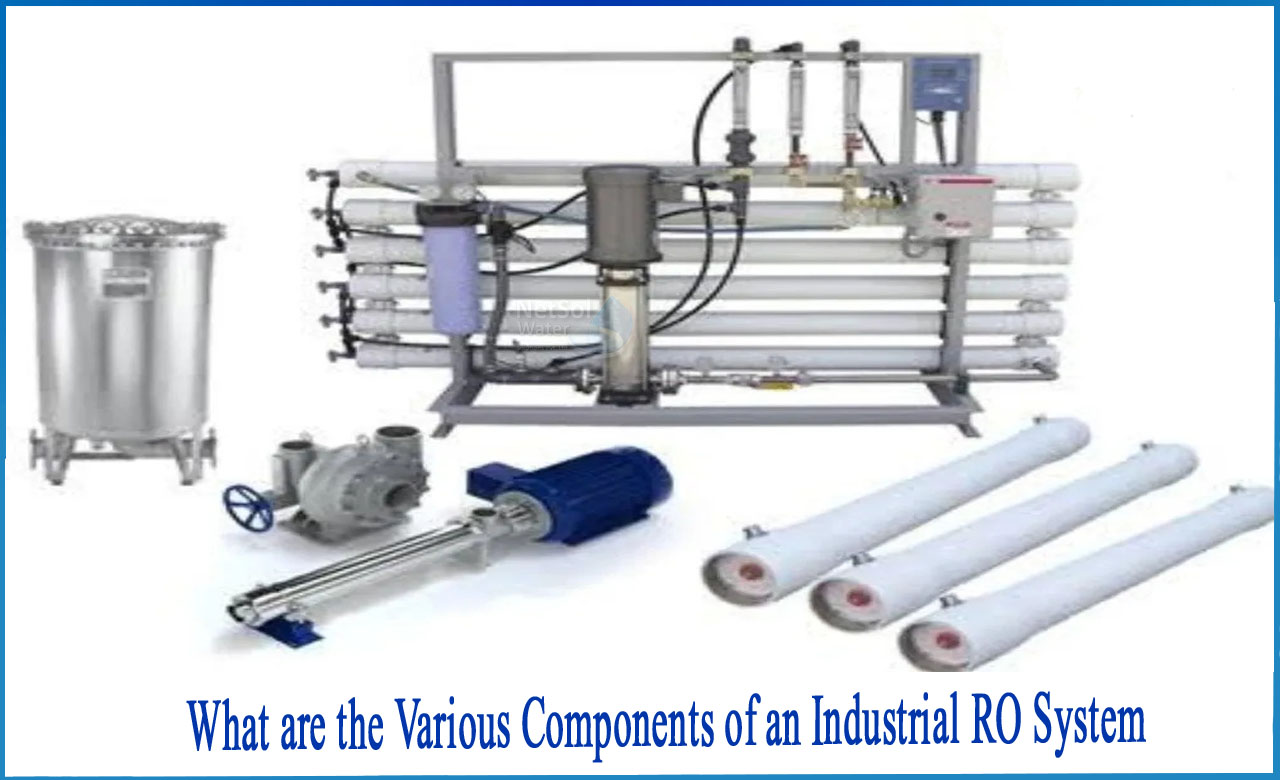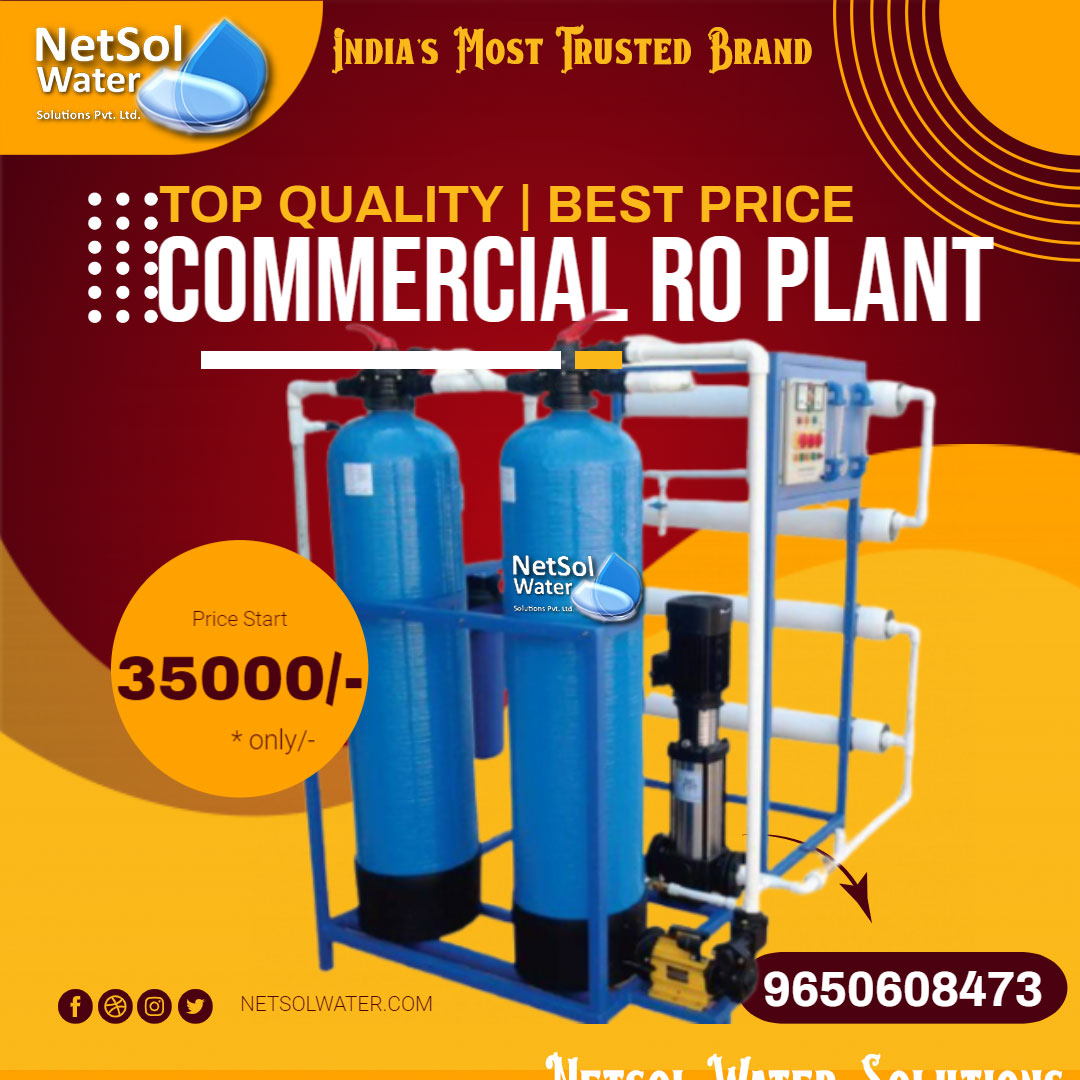What are the various components of an Industrial RO System?
Following are the various components of the Industrial RO Plants
1: Water supply connector: A water supply connector, also known as a feed water supply adaptor, connects the reverse osmosis filter's water source to the property's cold-water supply. RO systems come with an adapter for various supply valves. To best complement the plumbing arrangement, the manufacturer may provide a selection of fittings, valves, and saddle valves.
2: Carbon filter for chlorine removal: Most city water utilities demand a minimum chlorine level of 1.0 mg/L in water leaving the facility (1.0 ppm). After 1000 ppm-hours of free chlorine exposure, the RO membranes may be able to pass more TDS (less contaminant rejection). The carbon filter eliminates chlorine while also protecting the membrane downstream.
3: Pre-filter for sediment removal: The sediment cartridge removes sand, grit, precipitated mineral particles, insoluble iron oxide, and other debris that might clog the reverse osmosis membrane surface or fill the drain flow restrictor, reducing water production.
4: Auto shut-off valve: Conserves water by shutting down the drain when the tank is full. The major function of the ASO valve is to control the water supply to the reverse osmosis membrane. When the pressure in the pressurised storage tank exceeds two-thirds of the feed pressure, the ASO valve turns off the water supply to the membrane and waits until the tank is reduced to one-third of the feed pressure before resuming water flow.
5: RO Membrane: The RO membrane is responsible for the majority of the system's heavy lifting. It eliminates more than 96% of water's dissolved solids (salts, minerals, and metals), microbes, and organic compounds. The membrane divides the water flow into two streams. The filtered water from the membrane is routed to the storage tank. The rejected water is drained. If the consumer is on a city water supply with a water pressure greater than 70 PSI, most basic RO systems produce around 4 gallons of wastewater for 1 gallon cleaned (4:1). This ratio is controlled by the flow restrictor on the drain line.
6: Check Valve: When the ASO valve turns off the feed water pressure to the membrane, the check valve prevents pressured filtered water in the storage tank from leaking back and rupturing the RO membrane. On the permeate (filtered water) stream, a check valve is put directly after the membrane in our systems.
7: Drinking water faucet: In the commercial RO, systems frequently incorporate drinking water faucets that do not have an air gap and dispense only purified water. Some air gap faucets that come with RO systems also contain drain line connections, which protect the RO if the system experiences reverse suction.
8: Pressurized Storage Tank: When the drinking water faucet is switched on, the pressure tank in a system store filtered water from the membrane permeate and provides water under pressure. A bladder housed within a metal or plastic shell separates a water chamber from compressed air. When RO water is added to the tank, the bladder expands and compresses the air inside the casing even more.
9: Alarm System: It is in charge of informing the operator of any abnormal circumstance. Old acoustic sirens have been replaced by SMS or emails containing important information.
The following circumstances are the most essential for alarms in any Reverse Osmosis unit:
- Low pressure on the feed side
- High pressure on the concentrate valve
- Exceeded recovery value
- Feed water overheating
- Oxidant leak discovered
- Permeate conductivity level exceeded
- A faulty pump
10: Flow metres: They are one of the most important metrics in reverse osmosis systems. The flow values for the RO intake, as well as the permeate and concentrate fluxes, are required. The Ultrasonic and Turbine metres are the most common:
• Ultrasonic flow metres employ sound pulses and transducers to calculate flow based on the speed of sound in a fluid. Typical accuracies are in the 0.5% range.
• Turbine flow metres are electromechanical devices that transform a bladed propeller's rotating motion into electrical pulses. Accuracy is often in the region of 2%.These metres are prone to dirt and sediments, which is a disadvantage in other water treatment applications.
11: Temperature Transmitters: Water temperature is an important factor in reverse osmosis systems, with a significant impact on membrane function. Water viscosity decreases as water temperature rises. This suggests that membrane permeability is increasing. The increase in osmotic pressure with temperature reduces some of its benefit, but the overall effect is usually positive: as a rule of thumb, the production (permeate) increase is roughly 3% for every 1°C of temperature increase.
What do we have to offer?
Netsol Water is a renowned producer of water and wastewater treatment plants. Based on client feedback and job quality, we are the most demanding organization in the water industry. We have a reputation for being the top commercial RO plant manufacturer, industrial RO plant manufacturer, sewage treatment plant manufacturer, effluent treatment plant manufacturer, and much more. Aside from that, our USP is 24x7 customer assistance.




